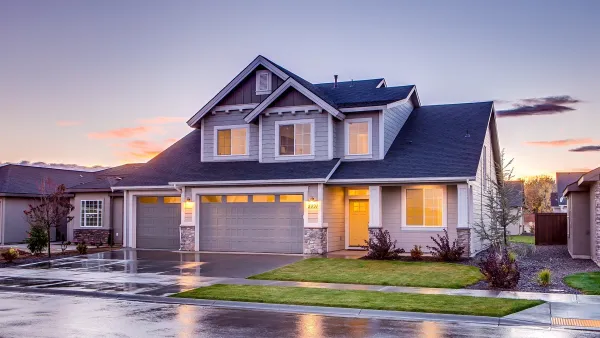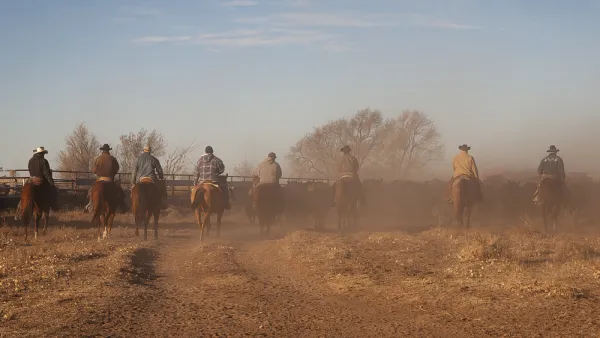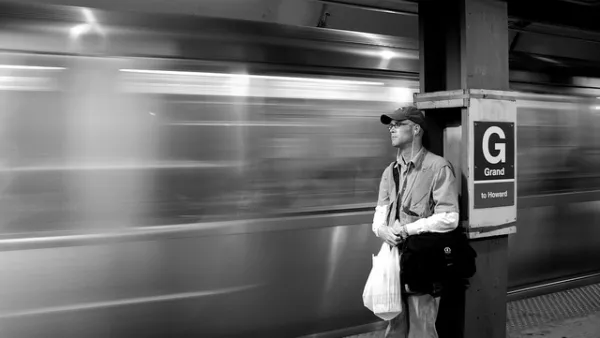According to a new report, U.S. transit ridership increased to 10.5 billion rides in 2012 - a 1.5% increase over 2011, despite transit shutdowns and reductions caused by Superstorm Sandy. High gas prices, and their volatility, was a major cause.
USA Today reporter Larry Copeland also pointed to the importance of the improving economy (more people going to work) and changing demographics as a reason for transit's growing popularity, "especially among Baby Boomers, empty-nesters and Millennials, who total about 150 million people."
As for the other reason, American Public Transportation Association President and CEO Michael Melaniphy "says the increase in transit ridership was driven, at least partly, by high gas prices, the volatility of those prices" in addition to the "nation's changing demographics."
The gas price explanation for increased transit ridership is not shared by a State Smart Transportation Initiative report posted here that analyses declining vehicle-miles-traveled. Many reasons are given while fuel prices are categorically rejected.
Copeland cited the Sound Transit light rail in Washington state as an example of the increased ridership. It "soared 12% last year to just over 28 million — a record in the agency's 14-year history, spokesman Bruce Gray says."
Why did 2008 set the record? Americans were unprepared for gas prices over $4.00 gallon. A better comparison for the record might be "the second highest ridership since 1957" according to the APTA press release.
If transit is going to keep up with the increased demand, additional funding will be needed - and the news is good there, according to the press release:
Melaniphy also pointed out that more Americans are supporting public transportation investment, as evidenced by the large number of transit-oriented ballot initiatives that passed in 2012. “Last year 49 out of 62 transit-oriented state and local ballot initiatives passed,” said Melaniphy. “That means there was a nearly 80 percent passage rate. This extremely high rate of success demonstrates how important public transportation is to people and to communities.”
The press release also breaks down the ridership increase into four transit modes:
- Light rail (modern streetcars, trolleys, and heritage trolleys) ridership increased 4.5 percent with 21 out of 28 transit systems reporting increases.
- Heavy rail (subways and elevated trains) ridership increased by 1.4 percent across the country as 10 out of 15 transit systems reported increases.
- Commuter rail ridership increased by 0.5 percent as 18 out of 28 transit systems reported increases.
- Large bus systems reported an increase of 1 percent and 29 out of 38 large bus systems reported increases.
Curtis Tate of McClatchy Newspapers points out that the improving economy is key to transit usage - and that exposes why not all transit systems are posting ridership increases. "About 60 percent of transit trips are to and from work, according to the public transportation association".
(W)hile many transit systems posted large gains, others saw a decline, reflecting the unevenness of the economic recovery. And declines in the state, local and federal tax revenues that support transit systems have forced many of them to cut back service.
FULL STORY: Public transportation hits 10.5B rides in 2012

National Parks Layoffs Will Cause Communities to Lose Billions
Thousands of essential park workers were laid off this week, just before the busy spring break season.

Retro-silient?: America’s First “Eco-burb,” The Woodlands Turns 50
A master-planned community north of Houston offers lessons on green infrastructure and resilient design, but falls short of its founder’s lofty affordability and walkability goals.

Delivering for America Plan Will Downgrade Mail Service in at Least 49.5 Percent of Zip Codes
Republican and Democrat lawmakers criticize the plan for its disproportionate negative impact on rural communities.

Test News Post 1
This is a summary

Test News Headline 46
Test for the image on the front page.

Balancing Bombs and Butterflies: How the National Guard Protects a Rare Species
The National Guard at Fort Indiantown Gap uses GIS technology and land management strategies to balance military training with conservation efforts, ensuring the survival of the rare eastern regal fritillary butterfly.
Urban Design for Planners 1: Software Tools
This six-course series explores essential urban design concepts using open source software and equips planners with the tools they need to participate fully in the urban design process.
Planning for Universal Design
Learn the tools for implementing Universal Design in planning regulations.
EMC Planning Group, Inc.
Planetizen
Planetizen
Mpact (formerly Rail~Volution)
Great Falls Development Authority, Inc.
HUDs Office of Policy Development and Research
NYU Wagner Graduate School of Public Service





























